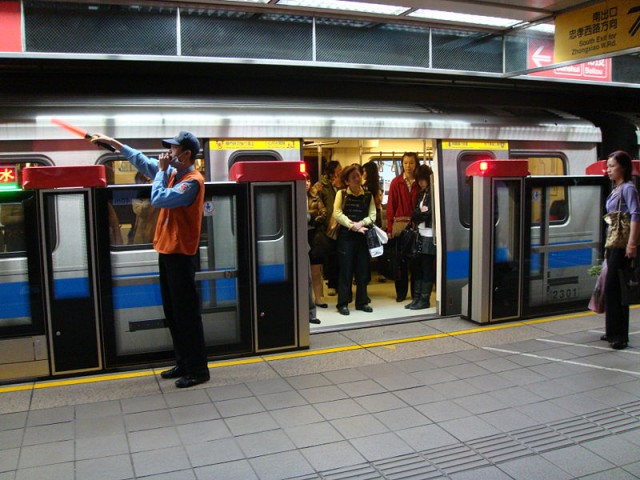
Every day, some five million riders negotiate New York’s labyrinthine subway system. It is the world’s most extensive underground transportation network, and has been running 110 years long. Unfortunately, New York saw almost one subway-related death per week last year, with considerably more injuries.
Taking a cue from some of the world’s busiest mass transit systems, like Tokyo and Seoul, the MTA is now considering retrofitting high traffic stations with floor-to-ceiling sliding glass doors acting as a barrier between the tracks and platform.
Platform edge doors not only improve security, but also can better the overall atmosphere of the platform by lowering heat or air conditioning loss as well as excess noise. Similar proposals have been considered in the past, but the lack of funding and construction complications have halted any further study. As stated in the last report on the subject, “Based on the MTA’s preliminary analysis, the challenge of installing platform edge barriers in the New York City subway system would be both expensive and extremely challenging given the varied station designs and the differences in door positions among some subway car classes.”
However, after several high profile subway deaths, the MTA is reviewing a proposal put forth by New York-based construction company Crown Infrastructure. The company would install floor-to-ceiling glass sliding doors and walls free of charge in exchange for a deal splitting revenue on advertising sales. More impressively, the company suggests installation could be completed without interrupting service schedules.
The goal of any public transit administration is to increase ridership without jeopardizing safety and efficiency. The question is whether the installation of these doors will improve this, and if it can trigger an overall positive outlook for the MTA. New York’s subway system is no stranger to complaints, and these modernized installations could improve the look and feel of the stations. As Bogota’s mayor famously stated last year, “A developed country is not a place where the poor have cars. It’s where the rich use public transportation.”
Photo: Wikipedia